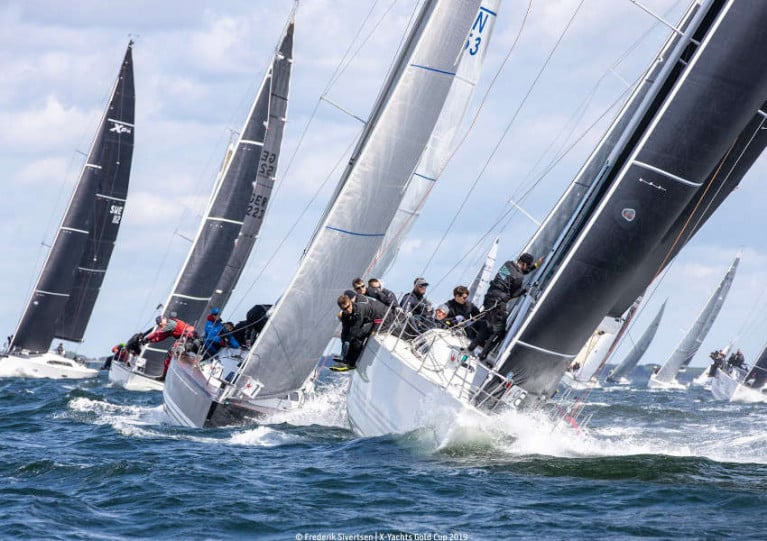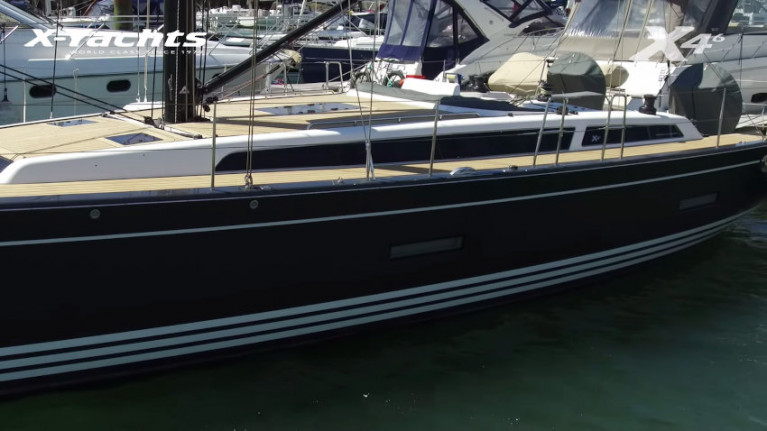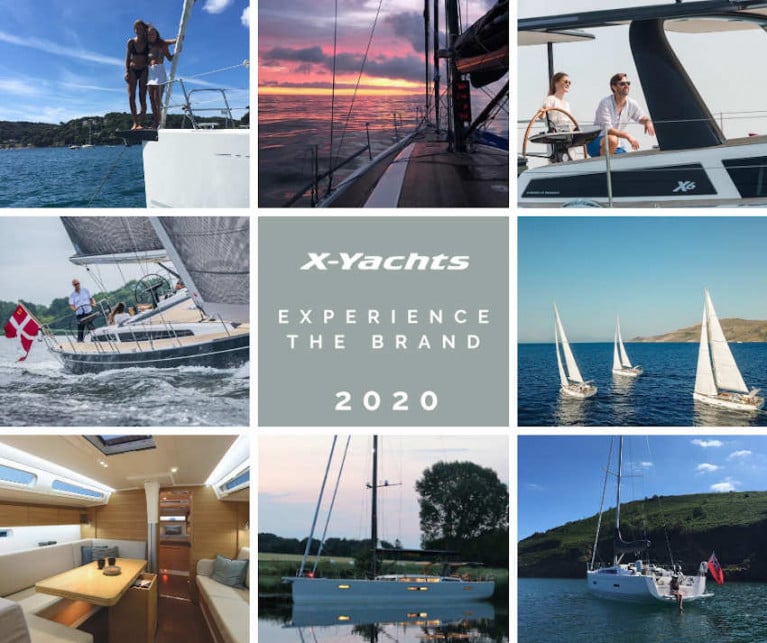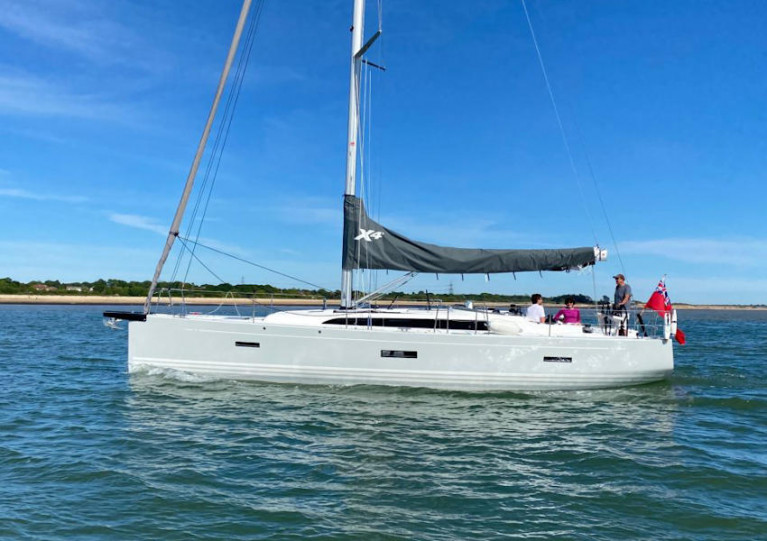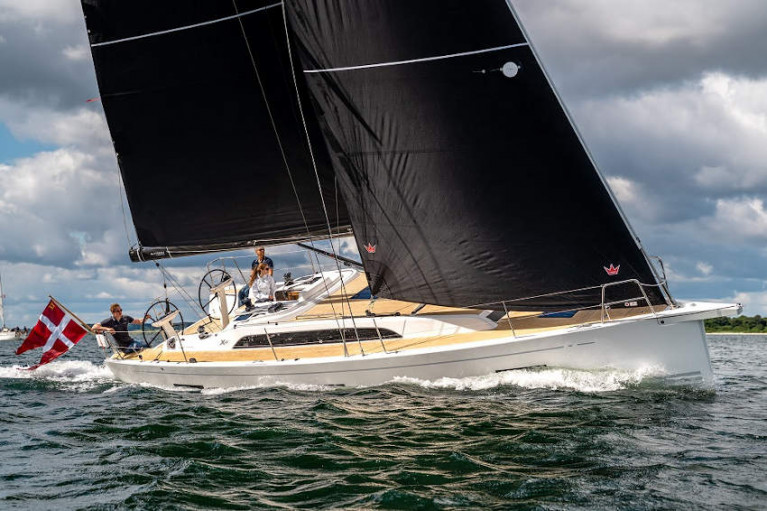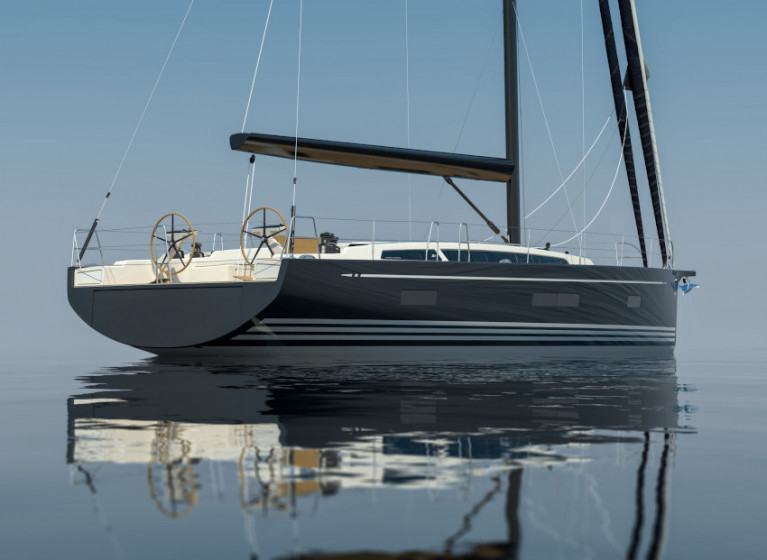Displaying items by tag: Xyachts
Juno, an X-34 from 2010, is a new arrival to the brokerage market and now available to view by appointment at X-Yachts’ UK office in Hamble (details attached below).
It joins a selection of new and old X-Yachts that will be on display at the Southampton marina for the final ‘Experience the Brand’ showcase of 2020 next weekend, from Friday 9 to Sunday 11 October.
Private or guided viewings can be arranged following all necessary precautions via the links included HERE.
X-Yachts To Host 2021 Gold Cup In Aarhus
X-Yachts will join with Sailing Aarhus to host its next Gold Cup in Denmark’s second-biggest city next summer.
The dates to save are 21-23 May with registration, as well as a detailed programme of events, expected to go online soon.
And the celebration is set to be a big one, following last year’s 40th anniversary bash and the restrictions on sailing amid this year’s coronavirus crisis.
“It is of the essence that X-Yachts owners can meet and enjoy a couple of days with like-minded and to have fun on the water,” says X-Yachts chief executive Kræn Nielsen.
“These kinds of experiences will always be remembered, and Aarhus is a perfect place to meet and it is a charming city with many cultural attractions … something for everyone.”
X-Yachts Showcases Latest Arrivals In Hamble For ‘Experience The Brand’ Days
X-Yachts has released a new video which showcases the yachts on display in Hamble from today, Friday 11 September.
The Danish builder is taking a relaxed, and safer, approach for prospective buyers to ‘Experience the Brand’ at its Hamble Point Marina base until 20 September, and again in October.
The X4⁹, X4⁰ and Xc 35 are among the newest arrivals, and private or guided viewings can be arranged following all necessary precautions.
X-Yachts Invites You To ’Experience The Brand’ In Hamble
With large international boat shows either cancelled or postponed this season, X-Yachts GB & IRL istaking a relaxed, and safer, approach for you to ‘Experience the Brand’.
A selection of new and pre-owned X-Yachts will be available to explore in safety and comfort at the company’s base in Hamble Point Marina, Southampton.
You can choose to view privately, or with our guidance where we can showcase the features, on dates available from 28-30 August, 11-20 September and 9-11 October.
RSVP by the previous links for your appointment to view, and for more details contact Debbie Weldon of X-Yachts GB & IRL at +44 23 8045 3377 or [email protected]
X-Yachts GB & Ireland’s original plan to travel to Denmark at the end of March for the handover of a brand new X4³ was not to be — but the business adapted to the change for its latest happy customers.
Despite the yacht being full rigged and ready to go, it quickly became apparent that collecting it from Denmark was not going to be as logistically easy as in 2019.
Instead, the X4³ was de-rigged, loaded to road transport, and brought back to Hamble for local commissioning.
During the period of lock-down, the vessel was slowly commissioned, and prepared until such times it could be launched and rigged.
After a day of systems handover, and test sailing, the X4³’s proud new owners Richard and Anne were delighted to be day sailing from Hamble, and getting to know their new yacht XETA in these perfect sailing conditions.
“We are so pleased to be out sailing at the end of May,” they said. “When lockdown started, we thought it would take months. Big thanks to the team at X-Yachts for getting the boat from Denmark, commissioning her, and ready for the first day lockdown was eased, and we can go sailing.”
All new build 2020 X-Yachts remain on time from the factory, as production in Denmark was not stopped, therefore the next British and Irish owners have the chance follow this delivery procedure and get sailing as soon as possible in 2020.
Take a tour through X-Yachts’ Pure X Range via its ‘Virtual X-perience’ VR guides for the stylish X4⁹, the European Yacht of the Year winner X4⁰, and the X5⁶, the new performance cruiser scheduled to launch later this year.
Using your computer, tablet or smartphone, you can step onboard and explore the important features of these luxury yachts both above and below deck.
Test your position at the helm, or go below into the saloon and discover the front and aft cabins, bath and heads.
X-Yachts encourages you to make yourself at home and feel the atmosphere the Pure X range in a new way — getting an insight into the spaciousness, acclaimed Scandinavian design and practical interior and exterior details that display what real comfort is.
What’s more, you can also contact X-Yachts Ireland for a personal online tour — and of course use the X-Configurator to outfit your choice of yacht to the specification you desire.
X-Yachts Gives Video Tour Of Pre-Owned X-37 ‘Vixen’
X-Yachts has posted a video tour of the 2006 model X-37, Vixen — one of many pre-owned and new yachts for purchase from the Dutch performance builder’s UK office at Hamble Point Marina.
Build number #65 was commissioned in 2006 and comes with a while hull with X-Yachts’ famous blue stripes, and a 2.3m L-shaped keel.
Other features include a standard aluminium, mast furling forestay, and race forestay option.
The cockpit is furnished in teak, as is the bathing platform (with white nonslip on side decks) and coachroof top.
Below decks, Vixen boasts two cabins with one heads, a classic layout with U-shaped galley and the owner’s berth forward.
Vixen has been owned three times previously, and the most recent owner based the boat in the Solent for short-handed cruises to the UK’s West Country, the Channel Islands and Brittany.
They added: “She is an elegant and very comfortable boat who looks after her crew in all conditions.”
Until current restrictions against coronavirus are relaxed to allow for in-person viewing, X-Yachts aims to provide more online video tours for a more in-depth look at its pre-owned and new yachts such as Vixen and the XC42 from 2014, Moonfish, which was presented earlier this month.
During the current movement restrictions, appraisal non-destruct surveys for pre-owned yachts (with no deposit payment) are being granted.
Purchase contracts can also be executed (both new or pre-owned) with a refundable deposit until yacht viewing or detailed survey where applicable.
X-Yachts GB & IRL has announced that its Solent Cup event originally scheduled for this spring has been pushed back a year due to the ongoing concerns surrounding Covid-19.
In a statement, the Danish boat builder said: “Taking into consideration the feedback from all of you and given the uncertainty surrounding the current situation with COVID-19, we believe it is pertinent and prudent to postpone the 2020 X-Yachts Solent Cup.
“Therefore, we are rescheduling the event for 2021. New dates 30th April to 2nd May 2021 — please pencil this into your calendars now and let’s get as many of you as possible joined up so that we make it a great event next year.”
X-Yachts also confirmed its production facility in Denmark remains operating as normal, with added hygiene measures. Outdoor viewings continue onboard new and brokerage yachts. However, new yacht deliveries will not take place on its premises for at least the rest of this year.
Hamble-based yachts can also be viewed remotely via FaceTime or Skype; email [email protected] for details.
“Our focus at this time is to try to maintain our service schedules so we are asking that all physical contact with our staff is reduced to a minimum,” the statement added. “We love catching up with our X-Yachts family but ask that you call or email with your sailing plans and news.
“If works are being carried out on your yacht, we will continue to send updates via email and are happy to discuss progress on the telephone. If you have works that are not yet scheduled and wish to talk through with an engineer, this again can be done via email or telephone conversation as normal.
“We are working hard to meet the relaunch schedules for all our service boats, but it is important to note that we are unable to bring forward any launches.”
X-Yachts Hosting Open Weekend In Denmark Next Month
X-Yachts is hosting an Open Weekend at its base in Haderslev, Denmark on the weekend of Saturday 7 and Sunday 8 March for prospective buyers to get up close with its growing range.
The performance builder’s indoor showroom will have a variety of award-calibre yachts on display — including recent European Yacht of the Year winner the X4⁰, alongside the X4³, X4⁶ and X4⁹ recognised in Cruising World’s Boat of the Year awards.
The firm’s new Xperformance and Xcruising lines will be represented by the Xp 44, Xc 45 and Xc 38 — lauded by Sailing World and in the European Yacht of the Year gongs.
And X-Yachts’ in-house naval architects and designers will show the latest developments with the newly announced X5⁶ project.
Be sure to RSVP on or before Saturday 29 February to confirm your spot among the limited places available.
Ryanair flies on Mondays and Fridays between Dublin and Billund, which is some 80km north of Haderslev (1 to 1.5 hours by car, or a 2.5-hour journey by coach via Kolding). Trains also run from Hamburg in Germany via Flensburg towards nearby Vojens (3 hours approx).
Hot on the heels of the European Yacht of the Year award win for the X4⁰, X-Yachts have revealed at boot Düsseldorf that their new X5⁶ is planned launch in November this year ahead of the 2021 show.
Chief designer Niels Jeppesen said: “Having developed the X4⁰ in 2019, it was an easy decision for X-Yachts to decide to meet the market’s request to fill the gap between the X4⁹ and the X6⁵.”
The 56ft performance cruiser and latest addition to the Pure X range is designed with serious cruising in mind — whether exploring the Mediterranean or crossing the Atlantic.
‘Light, strip and stuff’ is the maxim behind the X5⁶ design philosophy: weight saved via epoxy infusion constriction is used to increase stability for supreme comfort on board.
And the Danish brand’s clean, timeless style is expectedly reflected in its luxury, high-quality interior.
The X5⁶ will be available in a variety of configurations and the first boats are expected to hit the water this year. For more details contact X-Yachts Ireland.




























